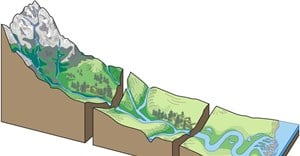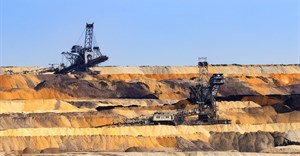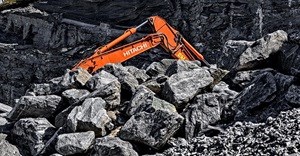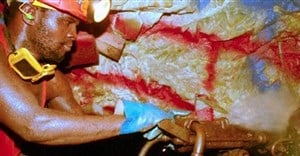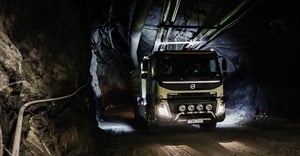
Subscribe & Follow
Jobs
- Administrator (Internal Sales Department) Vereeniging
Technology maturity driven by the Relentless Efficiency Lifecycle

As technology plays an ever-increasing role in every aspect of a mine's operations, those who do not modernise their logical (applications) and physical infrastructure will struggle to keep pace with their peers.
The Relentless Efficiency Lifecycle is a framework for miners to understand and create strategies better to transform their enterprise architecture. It views the concept of IT maturity as a six-phase process that, ultimately, transitions mining organisations from having a loose set of fragmented infrastructure - to a virtualised, mobile-optimised environment that capitalises on the latest mining technologies.
The first phase involves standardising - bringing together all the different systems that have evolved over time, for different business functions and different mine locations. This involves the miner selecting a set of vendors and open technologies that enable standardisation from an infrastructure and a support perspective. For example, the systems used to plan for blasting would 'speak to' the systems used to calculate yields, in a common language. Standardisation achieves cost efficiencies and enables a smoother flow of information throughout the organisation.
Unifying various mine operations
Next comes the process of unifying various mine operations within a country, or across the globe. Through centralisation, the miner can start creating shared services (such as Accounts Payable shared services, for example). Functions that would previously have been done independently at the mine premises are shifted to a head office location with the right infrastructure underpinning the newly designed, central functions.
Automation goes hand in hand with the previous phases. As the IT estate begins to mature, tighter integration between the various systems creates new opportunities to automate processes with rules-based engines. This reduces the reliance on manual processes, eradicates certain low-skilled IT tasks, generates greater efficiency, and positions the mine to scale up its operations with relative ease.
Once the business processes have been standardised, centralised, and largely automated, the CIOs can elevate their focus to visualisation. Online, real-time graphics can present visual representations of every aspect of the mine's operations - giving managers unprecedented visibility into the inner workings of the organisation. So, one can monitor the throughput of a mill, and then 'mash up' that data against other data sources - such as the previous week's performance, or the specifications expected, or against industry standards. Mobilisation is the process of extending key services and information down to mobile devices like tablets, smartphones or netbooks. This allows managerial staff to continue operating and interacting with colleagues and customers, from wherever they may be.
Finally, virtualisation enables the mining company to reduce the need for skilled resources on site. In a virtualised environment, skilled technicians, maintenance engineers, and managers can perform most of their day-to-day functions from anywhere in the world. This eases the age-old problem of struggling to attract certain skills due to the remote locations of most mining operations. Virtualisation also dramatically improves the productivity of specialists - as they can work of multiple mines from one central location.
A largely chronological sequence
The Relentless Efficiency Lifecycle is, essentially, a way to conceptualise IT transformation. In reality, these phases may overlap to some degree, and there may be a heavier focus on some areas than others. However, it paints the picture of a largely chronological sequence, and helps miners draft strategies that inform the right tactical approaches within each phase.
And, while reaching a state of 'full virtualisation' is probably out of reach for most miners at the moment, those that progress to the final stages of maturity reap significant benefits. These include:
While the benefits to miners may be huge, the complexity involved in reaching greater maturity and realising these benefits is never an easy task. With an experienced outsourced IT partner that understands the sector, the mining company is free to concentrate on its core competencies, and benefit from the experience of IT specialists.
New innovations - particularly in areas like cloud architecture and mobility - open up fantastic opportunities for miners. Knowing how best to implement these new technologies in line with the maturity road map requires strong partnerships within the miner's extended IT ecosystem.
About Shailendra Singh
Shailendra Singh is Business Director, Africa of Wipro.








